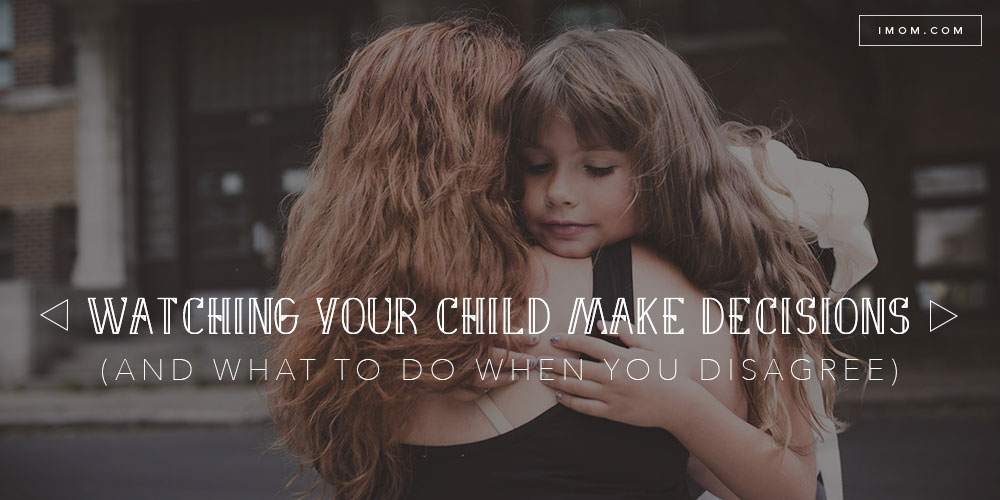A funny thing happened when I gave my 12-year-old son more control over how he would spend his days off from school—he actually made (mostly) good choices! Since he was making good decisions, I realized it was time for me to give up some of my mom-control and give him the chance to exercise more self-control.
Moms know we’ve got to loosen our grips as our kids get older, but it’s scary to think of all the ways their decisions could backfire. Fortunately, there’s a middle ground between controlling their every move and tossing them into the big decision pool, unable to swim. Have an ongoing conversation that includes these 5 statements to help them navigate their new freedom.
1. Let them know you believe in them
“I believe you can make a good decision…”
The power of belief is huge. If your child feels that you trust him, he will reason that you must see enough evidence in him to warrant that belief. It also sets him up to want to please you and prove you right. When we have negative expectations about our children and expect them to mess up, we tend to overlook the good in them, and they do too.
2. Give them a vision for their decision
“…and one day, you will be making all of the decisions in your life.”
This gives your child a glimpse of the future. She pictures herself capable. If she sees this future freedom as a chance to go wild and make bad choices, you’ll address that later in this conversation.
3. Go over pros and cons of their decision
“So that you can make the best decision, let’s talk about the pros and cons of your options.”
You’re teaching your child to think before acting and the importance of seeing how a choice always carries consequences—good and bad. This step can also include having your child get advice from a trusted adult or a friend who’s had to make a similar choice.
4. Come up with alternate options
“And the last thing we need to do is come up with a plan B in case things don’t work out with plan A.”
This is a very important step. It teaches your child that even with good planning, success is not always guaranteed but there is hope when things go wrong. We want our children to learn from their mistakes and realize they can become stronger and wiser because of them.
5. Assess, affirm, review
Once your child puts her decision into action, assess it. If the choice has worked out well, affirm her and her decision making. If things haven’t gone well, review the decision with her — not placing blame, but using the experience as a way to learn for the next time. Let her know that everyone experiences setbacks and that you’re there for her if she wants to run things by you and start over.
Also, remember that it’s very hard for our kids to understand how to make right decisions all of the time because their prefrontal cortex is still developing.
Of course, at some point, we will have to let our children go out on their own—to take the bubble wrap off. Better for them to experiment with having more control with us beside them, then to send them into the world with no practice and far from any help we can give them.
Tell us! How do you feel about letting your kids have more control over their choices?










